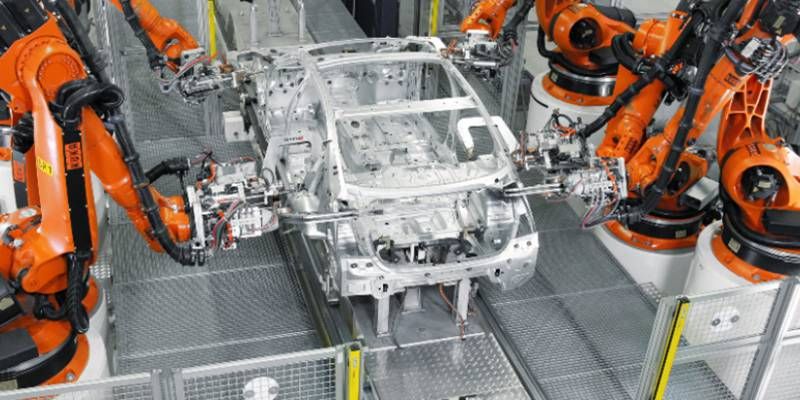How Automotive Lamp Welding Boosts Production Output
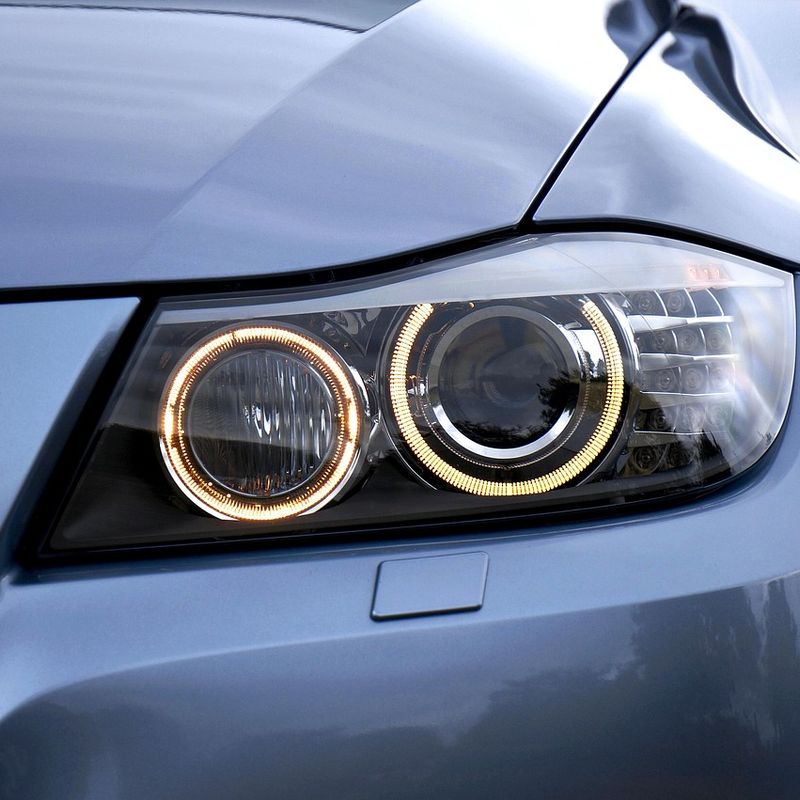
About 90% of automotive OEMs prefer welding over adhesives for critical lamp seals. That's because traditional methods, such as adhesives often fall short and lead to leaks and structural weaknesses.
This is where plastic welding techniques like hot plate welding come into the scene that deliver airtight & leakproof seals and ensuring safety & longevity.
At Dizo Global, our car lamp hot plate welding machine is designed especially for engineers and manufacturers who refuse to compromise on quality. Let's look at what the popular techniques in automobile lamp production are and how our product outperforms them all.

Table of Contents
What is Automotive Lamp Welding?
Common Welding Methods for Automotive Lamps
Why Hot Plate Welding Stands Out in Lamp Welding?
Introducing the Car Lamp Hot Plate Welding Machine
Challenges in Automotive Lamp Welding
Final Thoughts
FAQs
What is Automotive Lamp Welding?
In automobile manufacturering, plastic components of a car lightning system (lenses, headlamp housings, and reflectors) are permanently assembled into a single, sealed unit. For car manufacturing companies, plastic welding is considered a critical step in the automotive production of headlights, brake lights, and fog lamps.
Plastic parts welding creates airtight and durable seals. That's why it plays a key role in protecting the lamp from dust, moisture, and vibration, ensuring its long-term performance and safety on the road.
Thermoplastic materials like polypropylene (PP), polycarbonate (PC), ABS, and PMMA are the top choices of engineers because they react well to heat-based welding techniques.

Common Welding Methods for Automotive Lamps
Several types of plastic welding techniques are used in car assembly line. Each method has its pros and cons. Here are the four popular welding methods for automotive lamps in automobile parts manufacturing:
1. Laser Welding
In laser welding, a focused laser beam is used to melt and fuse plastic components along a precise joint line. Laser welding produces clean and highly precise welds with minimal deformation.
However, its laser welding equipment will be expensive and will require high part-to-part consistency. For auto parts manufacturers, this type of technique is ideal for modern slim LED lights where visual appearance is critical.
2. Ultrasonic Welding
Ultrasonic welding is a technique in which high-frequency vibrations are used to melt and join plastic parts under pressure. It is commonly used in indicator lights or small rear lamps with simple geometry in automobile parts manufacturing.
Ultrasonic welding is a fast and efficient method that consumes less energy. But its drawbacks are its limitation to only small parts and it also leaves marks on the weld area.
3. Vibration Welding
In vibration welding, two plastic parts are rubbed together under pressure to create frictional heat. This heat then melts and joins the surfaces. This type of welding is used in large headlight housings with flat weld planes in the auto production.
It produces welds on large parts and can also handle material with high melting ranges. However, vibration plastic welding also generates noise & particles and is not a suitable option for fragile parts.
4. Hot Plate Welding
For auto parts manufacturers, one of the most versatile welding techniques is hot plate welding. In this method, a heated metal plate is used to melt the surfaces of plastic components.
Once they're melted, parts are pressed together by applying pressure to form a strong bond. Hot plate welding works well with large parts and generates strong & airtight seals in the car assembly line.
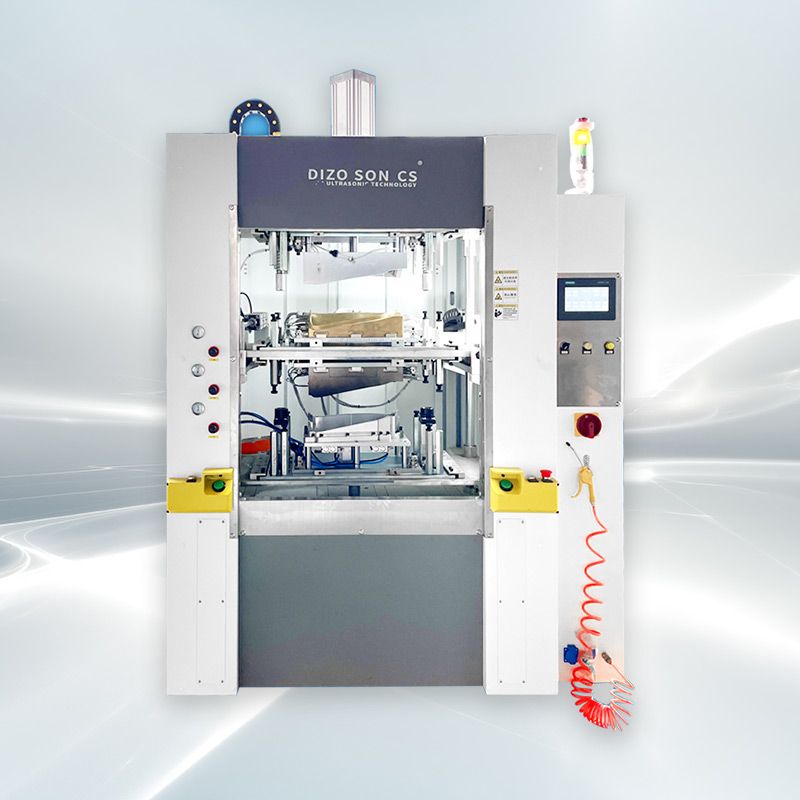
Why Hot Plate Welding Stands Out in Lamp Welding?
As car lamp designs are becoming more complex day by day, car manufacturing companies now need thermoplastic joining method that caters to their demanding needs in automobile manufacturing.
Hot plate plastic welding emerges as a go-to solution, especially for large plastic lamp components. Here's why auto parts manufacturers prefer it for critical lamp applications.
1. Excellent Bond Strength
Unlike adhesives and fasteners, hot plate welding melts and fuses plastic parts at a molecular level. Therefore, it generates joints that are:
- Stronger than the base plastic to withstand vibrations.
- Leak-proof to avoid moisture.
- Resistant to UV and temperature change.
That's why the headlight housing stays sealed in extreme temperatures and endures off-road vibrations without cracking.
2. Suitable for Complex Lamp Geometries
Car lamp designs are rarely simple. Hot plate welding for car lamps is a top choice for car manufacturing companies because it adapts well to curved joints, thick walls, irregular parts, non-flat surfaces, etc.
This welding technique can handle large-size housings very well. It always ensures seamless and airtight seals on irregular surfaces with minimum flash.
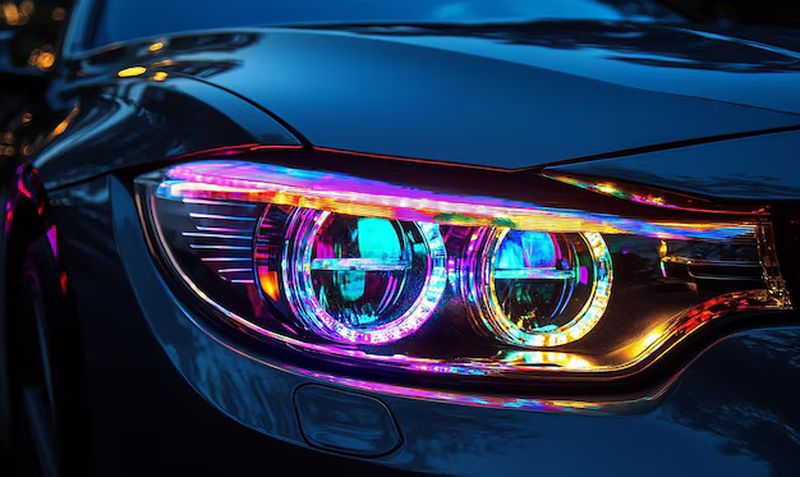
3. Broad Material Flexibility
Unlike laser welding, which requires specific material pairs, hot plate welding can work with all thermoplastics used in auto lamp production.
It can work well with polypropylene, which is used in housings, polycarbonate, which is used for lenses, and PMMA, which is for high-clarity covers.
4. Cost-Effective
Unlike laser welding, hot plate welding is cost-effective to install and maintain. It's because this technique eliminates consumables (fasteners, adhesives), reduces the hassle of reworks, and has tools (hot plates) that last for years.
Moreover, modern plastic welding machines with features like self-cleaning hot plates and automated controls make this method more efficient and user-friendly.
Introducing the Car Lamp Hot Plate Welding Machine
Trusted by leading manufacturers of automotive lighting, bumper, DIZO's car lamp hot plate welding machine always delivers reliable welding results. It is specifically designed for the headlamp, taillight, fog light, and indicator assembly. Here's what makes it stand out:
1. Automatic Cleaning
The car lamp hot plate welding machine has self-cleaning molds that automatically remove the plastic particles or buildup between cycles. It makes it perfect for high-volume productions where every second counts.
This feature:
- Ensures High-quality welds every time
- Reduces the downtime
- Extend the mold's life by preventing any carbon buildup.
2. Material Versatility
It can handle a variety of thermoplastics like
- Polypropylene
- Polycarbonate
- PMMA (acrylic)
The car lamp hot plate welding machine is one machine for all lamp types, which means you only have to switch materials without retooling.
Moreover, it not only reduces the material-specific adhesives costs but also adapts well to the new plastic blends.
3. Superior Weld Strength
This welding machine is specifically designed for creating joints that are stronger than the base material. It allows the resulting products to withstand vibrations, impacts, and thermal stress. The machine reduces warranty claims and ensures end-user satisfaction.
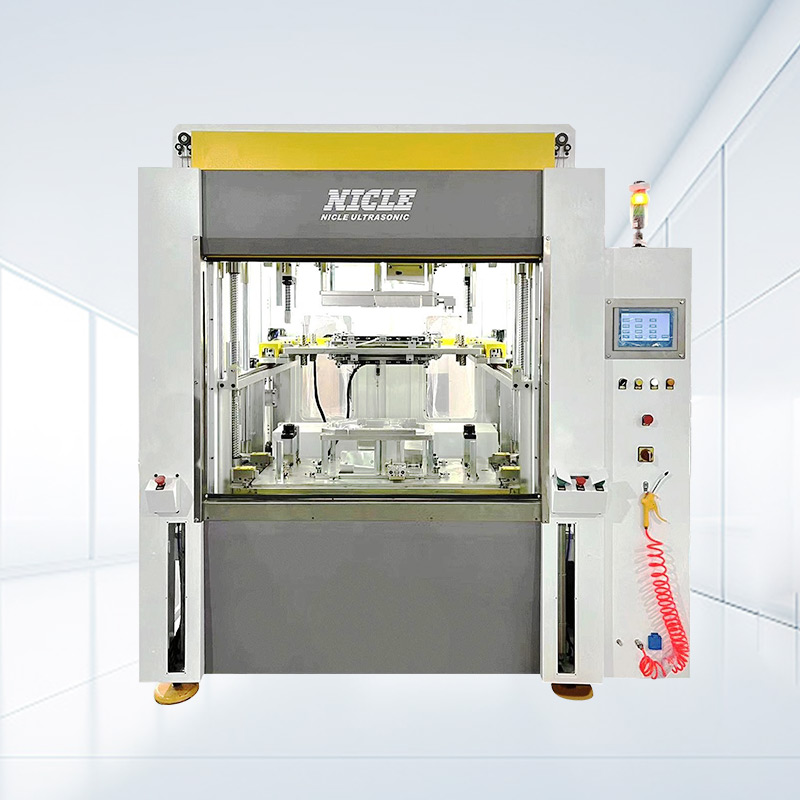
4. Precise Depth Control
In this welding equipment, advanced hot melt depth control maintains exact melt depth across both flat and curved surfaces. It ensures no weak spots and uniform bonding for airtight seals.
This feature enables our machine to work with multi-angle tailight designs with minimal flash.
5. User-friendly PLC interface
The welder features an intuitive PLC-controlled system that allows users to easily set and monitor welding parameters. It requires minimal technical expertise, therefore reducing training time and speeding up the setup.
With greater accuracy and stable output, the car lamp hot plate welding machine at DIZO has become an ideal solution for OEMs and Tier 1 suppliers who are looking to upgrade their lamp assembly lines.
Challenges in Automotive Lamp Welding
Welding automotive light components might sound straightforward, but in reality, it comes with many technical and production-related challenges.
Here are some of the most common challenges faced in automotive lamp plastic welding:
- Adhesives and poor welds create micro-gaps, which cause moisture ingress. This can lead to electrical failures and fogging. That's why airtight seals should be produced by using the right technique.
- Lamps use many kinds of materials with varying melting points. Some methods struggle with dissimilar materials and thermal sensitivity.
- One of the main problems automotive manufacturers face is visible weld lines, flash, or discoloration on final products, which ruin lamp aesthetics, especially for high-end models.
- In high-volume automotive components manufacturing, balancing speed with quality is a challenge. A small inconsistency in temperature, pressure, or part fit can lead to defective welds, which cause more downtime.
Final Thoughts
Automotive lamp welding is a process that affects the safety and visual appeal of vehicle lighting systems. Among the available techniques, hot plate welding stands out because it delivers airtight seals across a wide range of materials and lamp designs.
Dizo Global's Car Lamp Hot Plate Welding Machine's automated features make it ideal for those automotive manufacturers who are looking to reduce rework and improve the hot plate welding quality of their final product in auto production.
FAQs
1. How Do I Prevent Moisture Ingress in Welded Lamps?
Moisture Ingress can be prevented in welded lamps by using the hot plate welding technique for molecular-level fusion. Ensure uniform melt depth and post-weld inspections for micro-gaps.
2. What materials are commonly used in automotive lamp housings?
Common materials used in automotive lamp welding are Polypropylene, polycarbonate, and PMMA. These thermoplastics are compatible with hot plate welding.
3. Can I Repair Cracked Lamp Housings with Welding?
Cracked lamp housings can be repaired with welding, but material compatibility is critical. Hot plate welding is mostly used for thermoplastics.
4. How does hot plate welding compare to laser welding in terms of cycle time and efficiency?
Laser welding typically offers faster cycle times (20 to 25 seconds) compared to hot plate welding (40 seconds to 1 minute), making it more suitable for high-volume production. However, hot plate welding is often preferred for its strength and ability to handle complex shapes.


